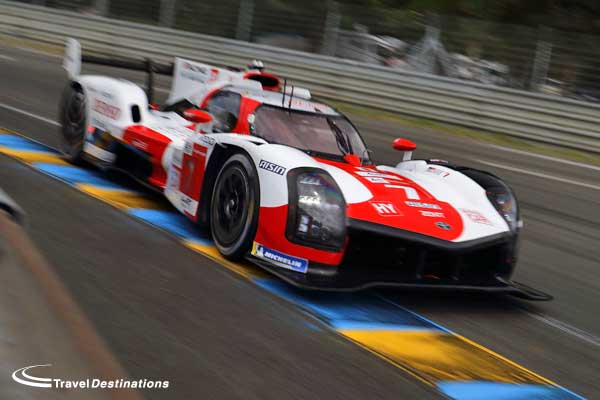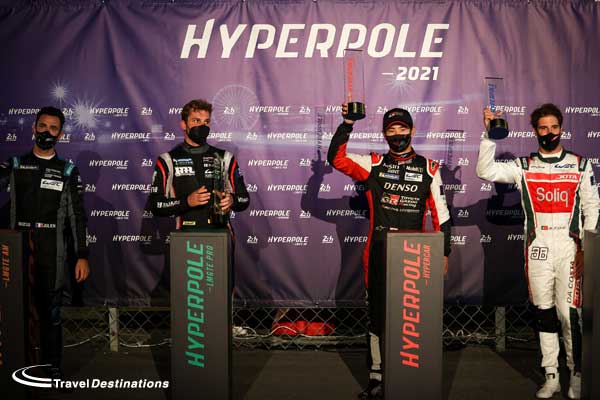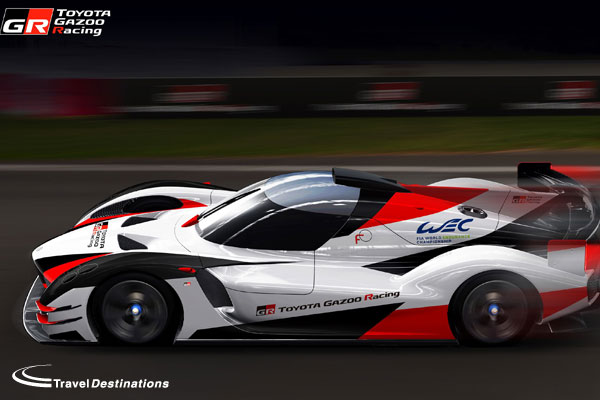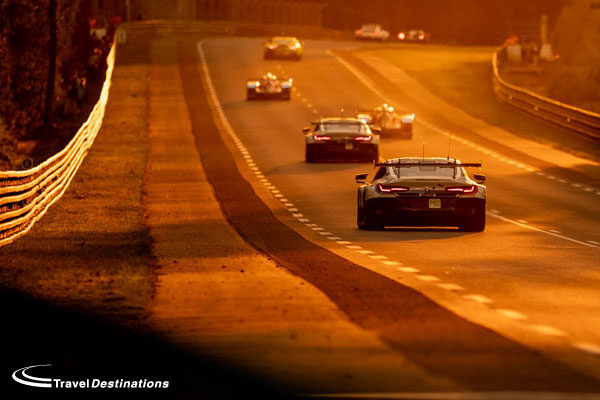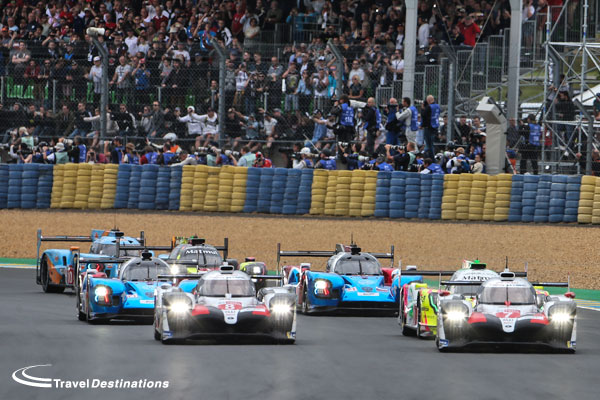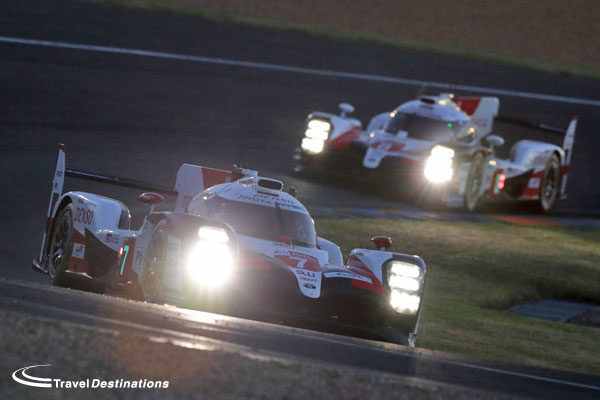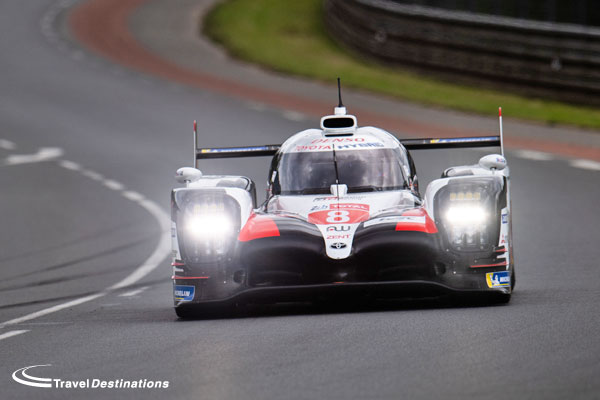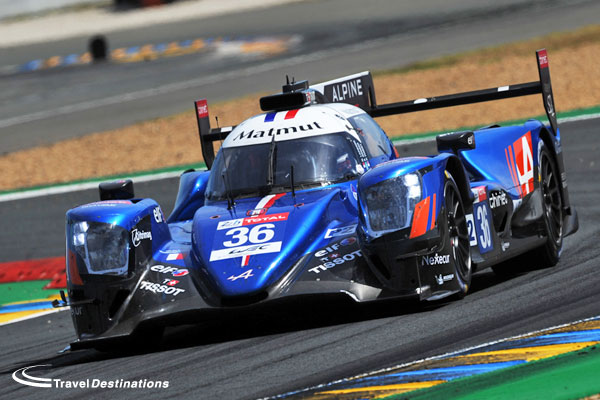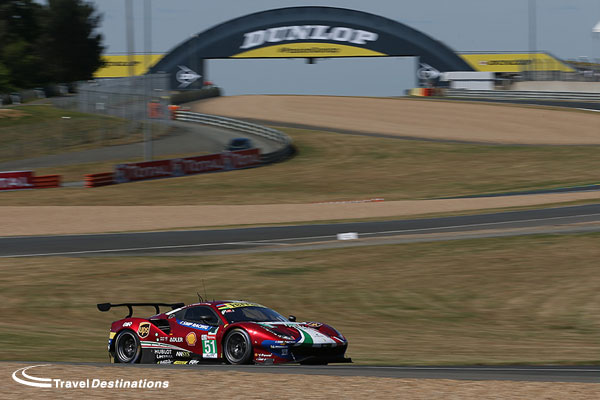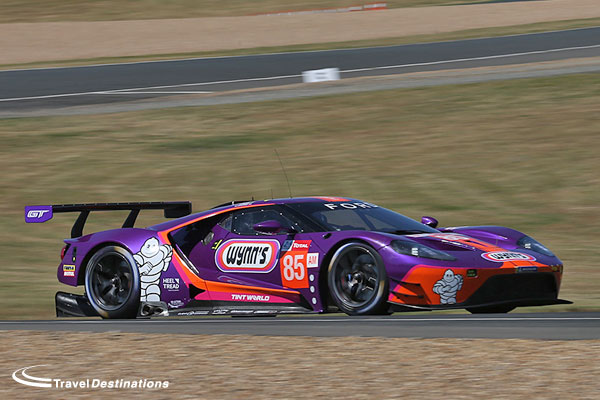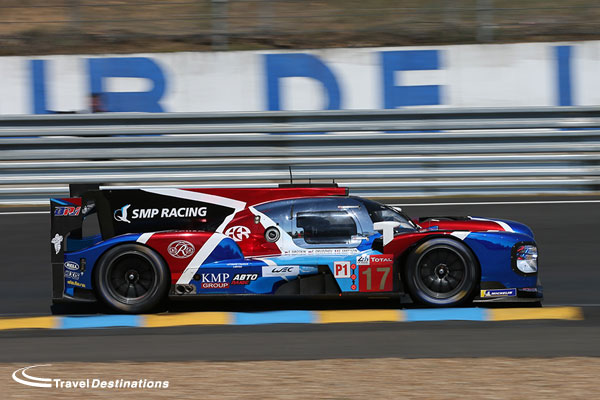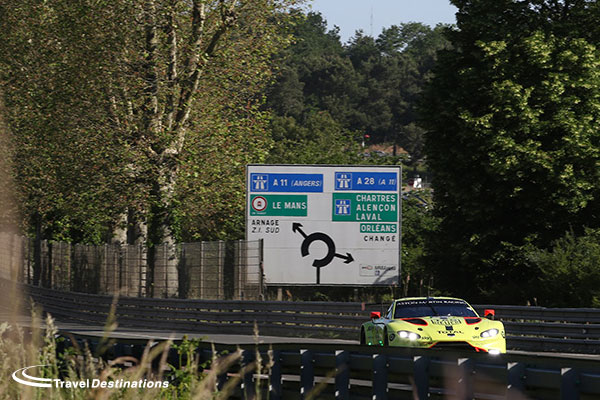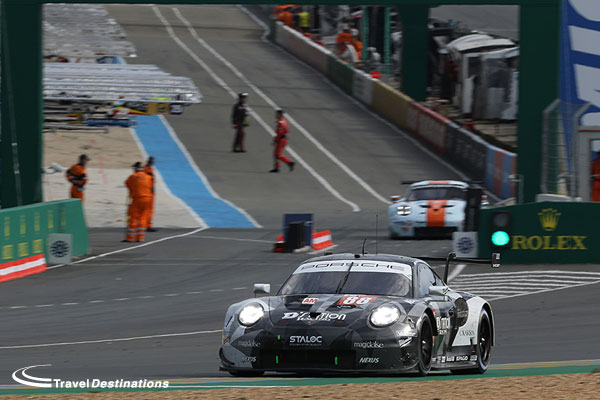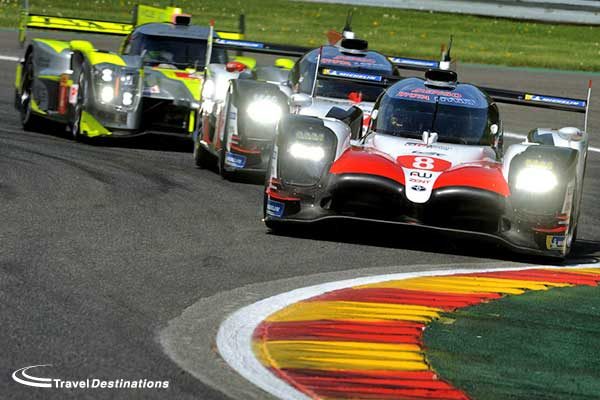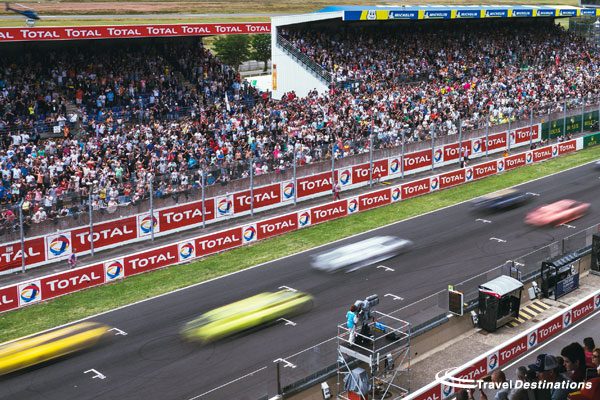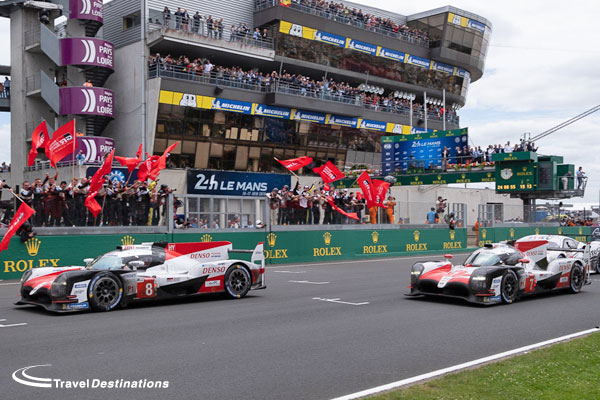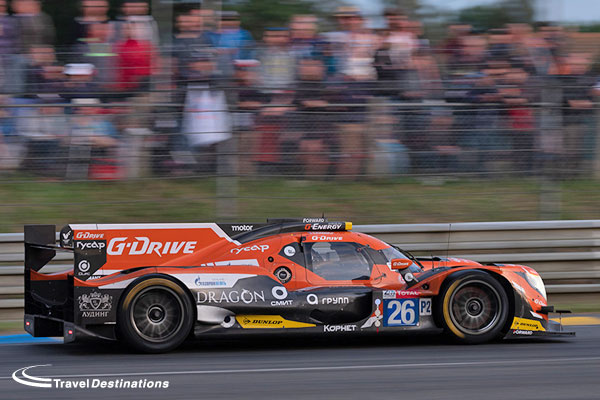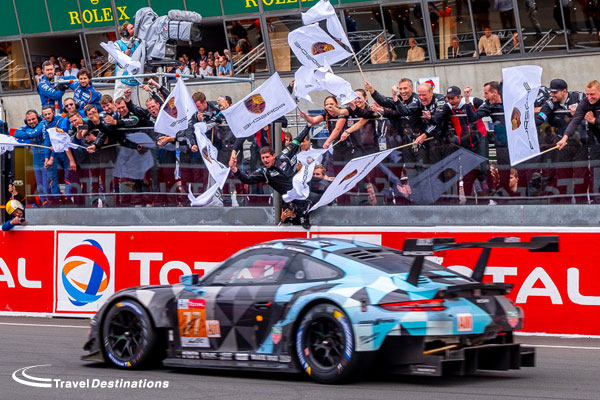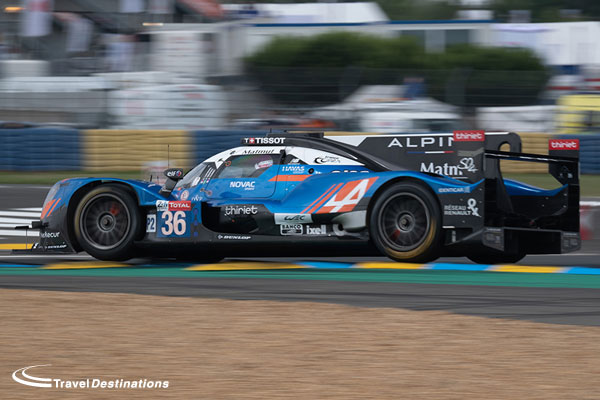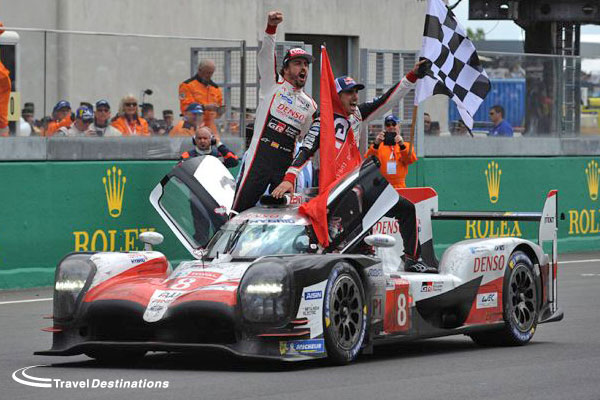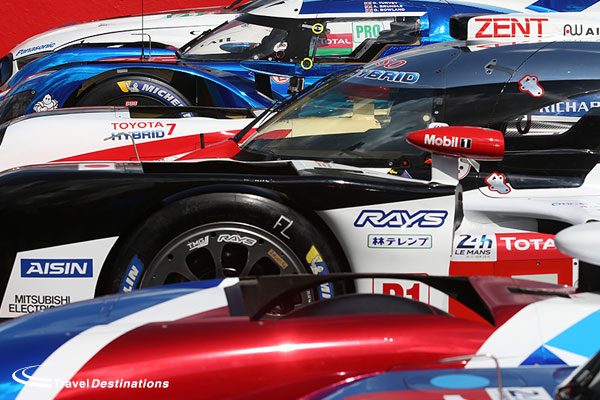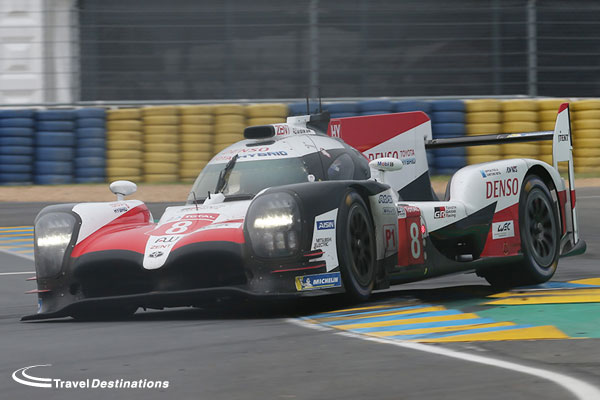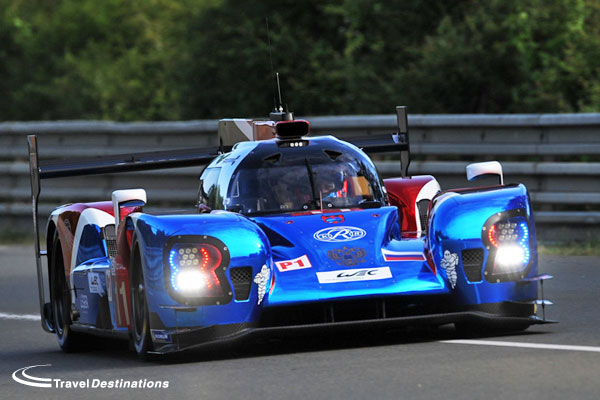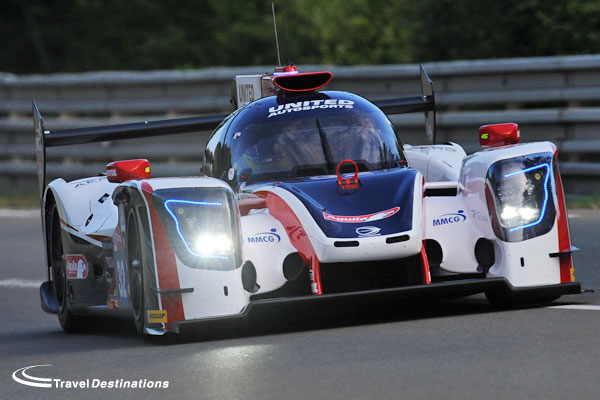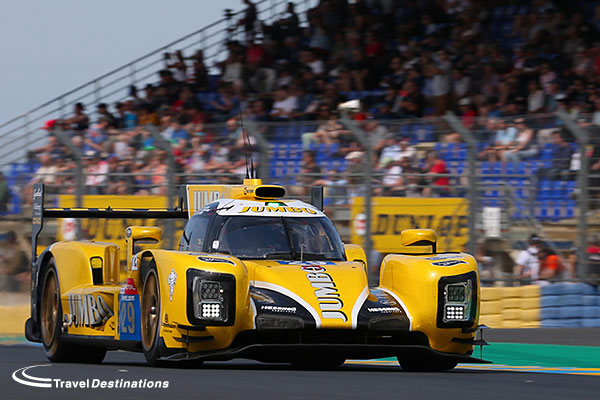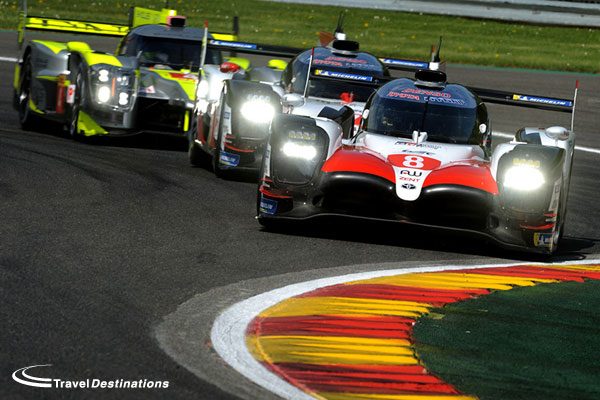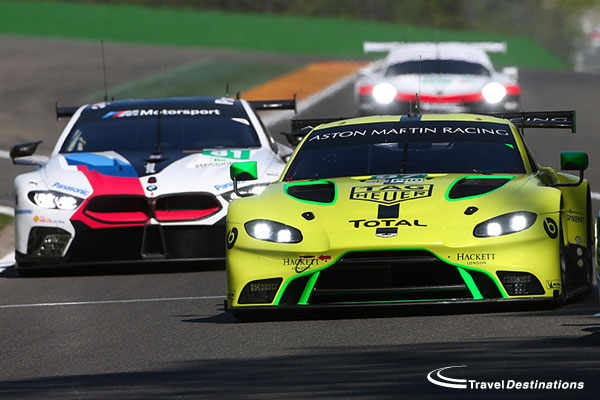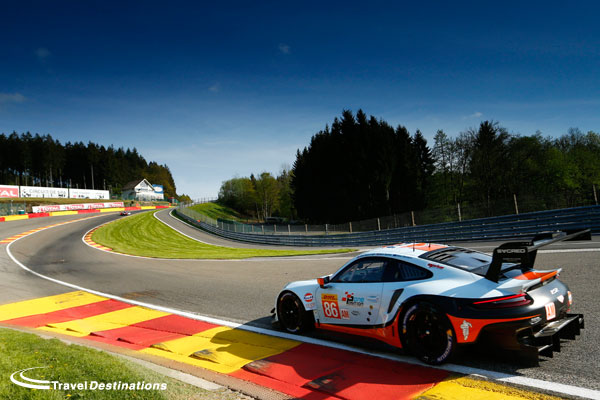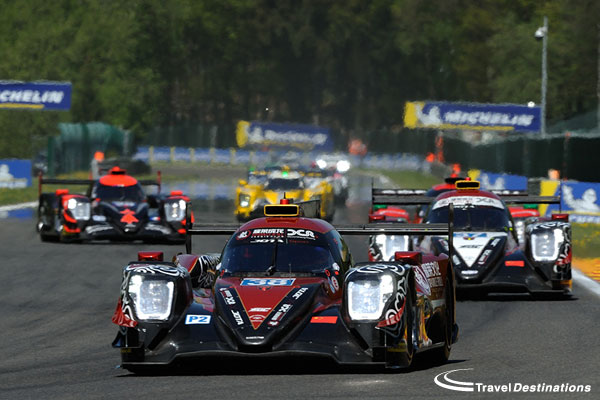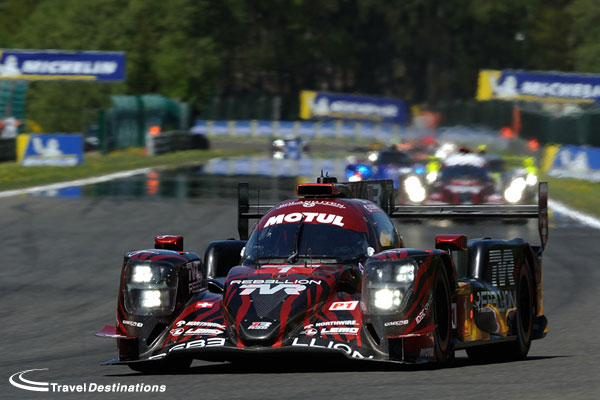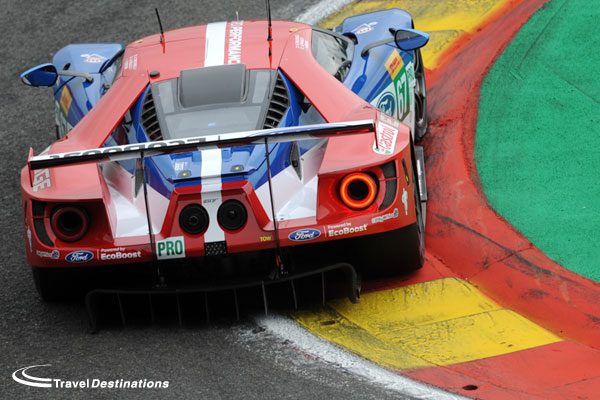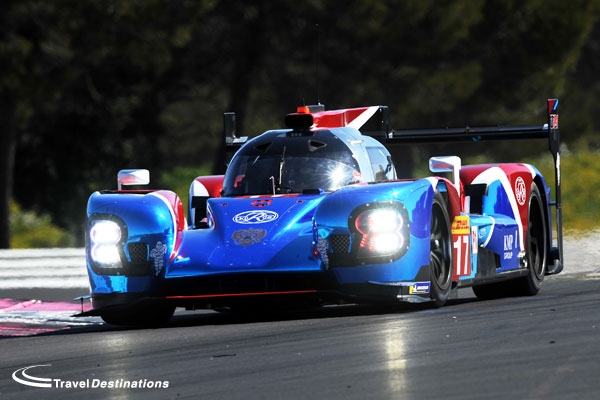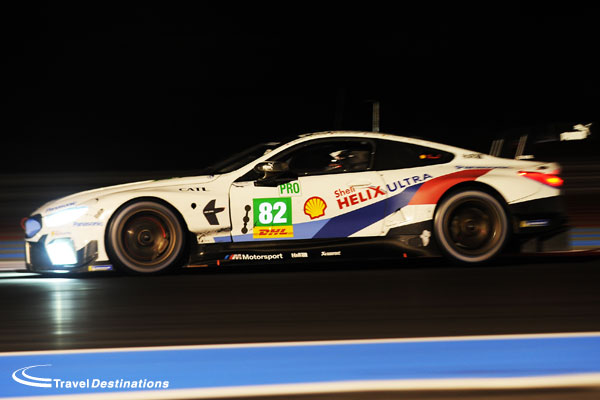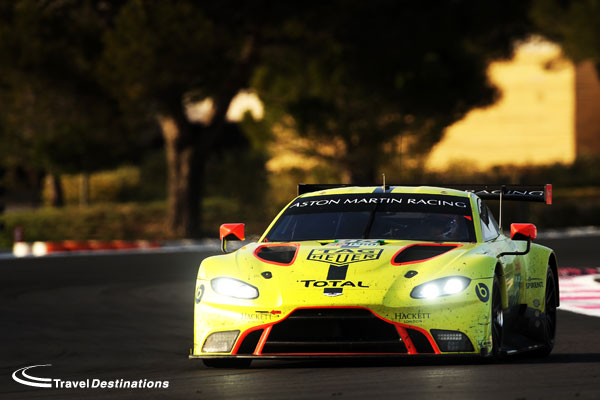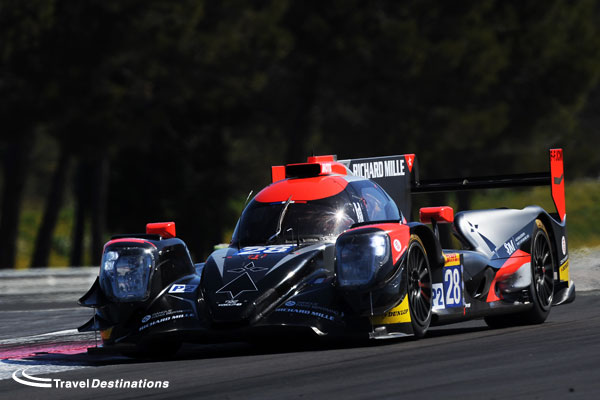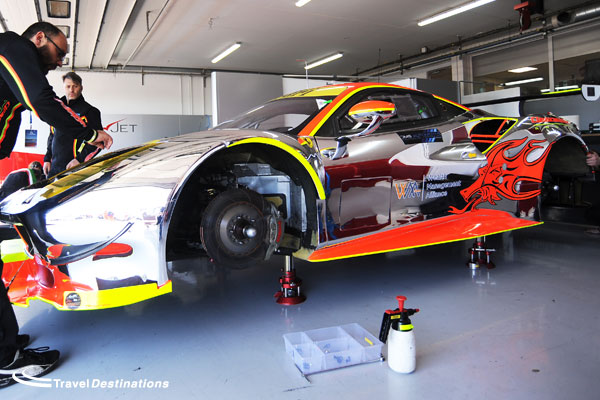Half-time in the FIA WEC ‘Super Season’
With the 6 Hours of Fuji behind us, and Shanghai just around the corner we are just over halfway through the 2018/19 FIA WEC ‘Super Season’, with just one race left this calendar year. This season has been a lot of things so far this year, but boring isn’t one of them. There has been drama aplenty, controversy, some great racing and enough story-lines to warrant the season’s label. As a result, we are left with plenty of hopes and fears heading into the home straight in 2019.
Equivalence of technology blues
The FIA WEC Prologue at Paul Ricard seems like an age ago. Pre-season testing is always tough to read into. Are teams showing their hand? What programmes are they running? Is the new machinery up to scratch yet? The 30-hour test to kick off the season did however, leave us with some clues of what was to come. Whilst the “unofficial” classification saw the top of the LMP1 privateer cabal faster than Toyota (Toyota’s official best times coming supposedly while running unrestricted), any bets on the private teams having a chance at competing for wins on track were quickly quashed at Spa, when the hybrid TS050s utterly dominated the competition. And it’s been like that ever since, leading to the big debate of Equivalence of Technology ruling the headlines ever since.
The questions we are left with, and still looking for answers for are as follows:
1. Should Toyota be penalized because the privateer prototypes aren’t yet quick enough?
2. Could the privateers compete even if all was equal on a performance level?
3. Should Toyota be handed an advantage for the sake of the FIA WEC’s public-facing image?
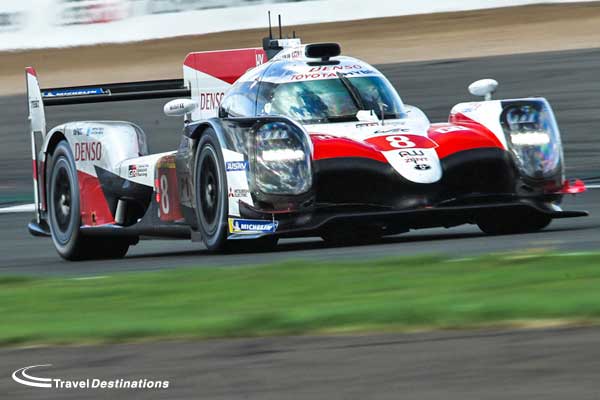
Toyota has by far the most sophisticated, tried, tested and fastest car in the LMP1 field. Toyota has the only cars that are hybrid-powered now that Porsche is gone and the most experienced set of drivers, team personnel and resources. So, making it a contest is really hard. This is more than David v Goliath, this is David v Goliath, if Goliath had far more effective weaponry as well as a dominant stature. Surely, on that basis, you can make the argument that Toyota shouldn’t be artificially hobbled because the competition isn’t up to scratch? Well, at this point it’s a tough side of the fence to sit on. That’s because, wait for it… This is a sport, it’s entertainment, and there could be real trouble if the ACO and FIA WEC let Toyota run away with the title.
Now, so far there have been multiple Equivalence of Technology changes, in an attempt to give the field more balance, but it hasn’t been nearly enough for us to see real on-track action between the hybrid and non-hybrid machinery. That wasn’t helped by the fact that going into the season the privateers were forced to spend longer in the pits, and pit more often than the hybrids, artificially!
Le Mans was no contest, not even a tiny bit, not even for a lap. And since Silverstone, with most of the manufactured disadvantages taken away, the privateers are still not able to show off the true potential of their cars, as the fuel allowances per lap and stint are such that lifting and coasting down the straights (their only real area of advantage) is still necessary. That, coupled with the fact that the TS050s have an innate advantage through traffic thanks to the hybrid punch out of corners, means that Toyota doesn’t even have to push to its limits to win each race in formation, by multiple laps.
But, and it’s a big but, there is still time. There are rumblings in the paddock, and a real appetite for change. Rebellion Racing, SMP Racing, ByKolles and DragonSpeed have all turned up as promised, shown real loyalty, and effectively saved the class from fading away. So it wouldn’t be a surprise to see the second half to this season have a completely different feel.
Star Power
It’s not all doom and gloom. Not at all. While there is no known cavalry coming in LMP1 for the remainder of the FIA WEC ‘Super Season’ or indeed the 2019/20 season, there is cause for optimism, and part of it, is already within the championship. There is time for further change, and therefore some astonishing racing between the selection of drivers in LMP1, which arguably, has never been better. Should the ACO crack the EoT code, and get the privateers fighting for wins by Sebring, then we will have a real treat on our hands in 2019, with some of the world’s best drivers going toe-to-toe in a similar fashion to the golden years of the ALMS when Audi battled Penske, or when Pescarolo battled Audi at Le Mans.
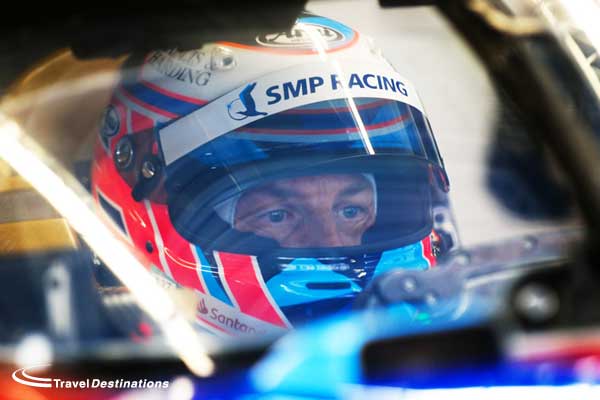
It is easy to forget that in LMP1 alone, we have two Formula One World Champions in Jenson Button and Fernando Alonso, competing against one another (though not on the track thus far!) in the same field as a WTCC champion in Jose Maria Lopez, a Formula E champion in Sebastien Buemi as well as multiple FIA WEC and Le Mans winners like Neel Jani, Andre Lotterer and now Kazuki Nakajima. If changes are made then the fabulous set of cars we have, can produce racing worth of the price of admission, and keep that level of drivers wanting to keep coming back for more. Because there is real potential here, it almost feels like the class is a sleeping giant. The cars are impressive, the driver crews are, we just need either the privateers to be allowed to breathe, or the Toyotas to be pegged back so we can have a title race that lasts until next Le Mans.
Real hope for the future
As for the future beyond 2019/20; well there’s green shoots, as the ACO and FIA prepare for the most important period in the World Endurance Championship’s short history – the months between the 2020 top class regulations being ratified in December, and the start of the 2020/2021 season. During that time, the future and fate of the championship may well be sealed. Will the factories come and adopt the new formula (hybrid-powered prototypes featuring heavy styling cues), or will the rule makers need a serious re-think once again about the shape and structure of the championship, which let’s not forget, still features a strong GTE Pro class with five manufacturers?
Let’s start with the 2020 yet-to-be-named ‘hypercar’ regulations, before diving into the zero-emissions target even further down the line. There is a big group of manufacturers known to be in the room, shaping the technical regulations and considering joining the new formula in 2020. This means that there’s plenty of scope to have a healthy grid. Of course, there’s no assurance that any of them will come, though Toyota seems certain, and Aston Martin has publicly stated that it is “very interested” in the potential. That’s without digging deeper into the other potential factories that have requested presentations and pitches at board level from the ACO and FIA. A defining factor of this whole formula will be cost, and the ACO and FIA seem confident that not only will the new formula prove cost effective for both factories and privateers, but also remain a proposition for aspirant factories or teams looking to join in after Year 1, due to the performance levels being contained and the fact that all hybrid systems have to be offered as off-the-shelf, cost-capped, systems to any competitor on the grid. The cars should look stunning, and set times not too far off the current LMP1s. And if a handful of teams commit, this could turn into a hugely successful formula. What is more, is that it won’t be long until the potential field for the 2020/21 season starts to take shape. “This is the first time ever that private teams will be able to purchase all of the elements of a hybrid prototype programme, off the shelf, and then be ultimately competitive,” Toyota’s technical director Pascal Vasselon said back at Fuji. “They will genuinely have that opportunity, with no performance gap between their cars to the factory teams. We have always pushed for the technology to be of the highest level but we have to accept that for the moment the first priority is to bring more competitors to the Championship. “And, we have said repeatedly that we are here for the long-term.”
As for the zero-emissions target, the foundations have been laid. We have seen the Project H24 Adess-based prototype turn laps at Spa-Francorchamps back in August, and a pit stop demo too. The technology for hydrogen power is coming, and it’s coming fast. That too, could breathe further life into the ACO’s top class come 2024, when there is the aim for teams running both zero emissions and hydrogen prototypes against one another. That will be sight to see!
GTE hotting up
It is safe to say that the start to the season saw a real imbalance in GTE Pro, with Porsche, Ford and Ferrari racing with a clear performance advantage over BMW and Aston Martin’s new machinery.
Now, with GTE racing, there’s always the question mark surrounding team tactics, and the impact of Balance of Performance, but Are the BMW M8s and Vantage AMRs good enough to win races and titles? The answer is yes, and we are starting to see just how competitive they can be, after strong showings from Aston Martin in certain conditions at Silverstone and Fuji, and BMW’s podium run in the last race.
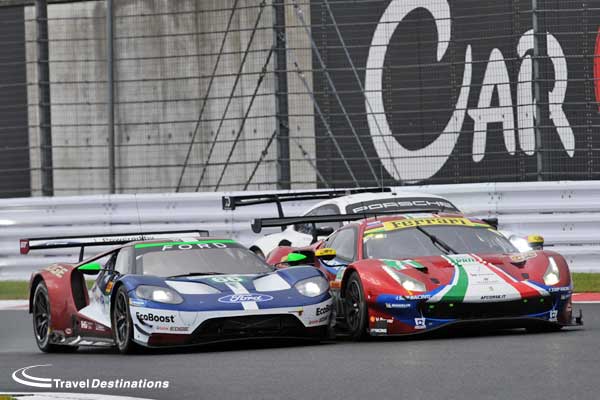
With Aston Martin and BMW up to speed, and the other three marques still just as competitive, we could be in for a barn-storming second half to the season. This is especially mouth-watering when you consider how much of it is left: we have Shanghai next week, then next year, Spa, and two rounds which award more than the standard haul of points at Le Mans at Sebring. “We’re just hitting our stride,” BMW driver Tom Blomqvist said after Fuji. “It has taken a while for the MTEK crew, which is new to the FIA WEC and endurance racing to get up to speed, but now we feel comfortable and know the car. Aston Martin look good now too, so the rest of the season should be really fun.”
The moments that mattered in the opening rounds
• Toyota Gazoo Racing’s No. 7 Toyota TS050 HYBRID was forced to start at the back of the field in the opening race of the season at Spa; penalized after setting pole in Qualifying for an incorrect declaration of its fuel flow meter. This was key for two reasons: One, it meant that the stars aligned and FIA WEC debutant Fernando Alonso was promoted to pole for his first race, which he would go on to win. And two, it showed just how much of an advantage Toyota had over the privateers. Despite the No. 7 starting from the pit lane, a lap behind the field in the race, it finished second, on the lead lap and two laps ahead of the privateer pack!
• G-Drive Racing’s antics at Le Mans have been a big talking point since June. The Russian-flagged team was found to have gained an unfair advantage in the pits during the 24 Hours by tampering with the fuel rig. This cost the team its Le Mans LMP2 class win the day after the race, and sparked an appeal and hearing process that would drag on until October. Alpine inherited the win as the result, but had to wait until the weekend at Fuji to celebrate. And they weren’t even awarded the original trophy, that’s supposedly still in Russia!
• Say what you will about Fernando Alonso, but he’s stayed classy, kept a smile glued to his face, and adapted quickly to life at Toyota since the start of the year. The two-time F1 champ came of age at Le Mans, embarking on a night stint in the No.8 during the Le Mans 24 Hours which ultimately turned the tide of the race and laid the foundations for the No.8 crew to win the race, scoring the Japanese marque a huge, momentous and historic result. It was certainly one of the more impressive drives we’ve seen at Le Mans in recent years. Also of note is that the Spaniard’s triple crown run is alive and healthy.
• The retro-liveried factory Porsches at Le Mans went down an absolute storm. As part of the 70th anniversary of the brand, the team put their corporate image and decision making to the side and went all out to impress the fans. That in turn translated into a lot of publicity and big win for the 911 RSR, which is easily one of the most impressive GT cars in the modern era. It looks the part, sounds incredible too, and in ‘Pink Pig’ colours, it looked fabulous, taking a controlling win after a metronomic run, which put Porsche in the driving seat of the GTE Manufacturers World Championship race, and scored the marque another famous win at the Grand Prix D’Endurance. Bravo!
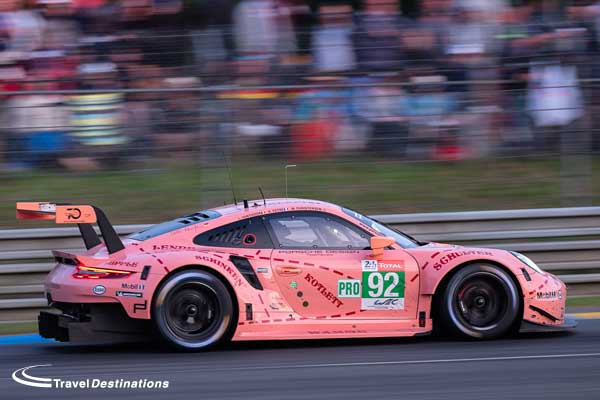
• Rebellion winning at Silverstone was a real landmark victory. Rebellion Racing’s No.3 R-13 officially scored the team its first overall FIA WEC victory and the first ever for a privateer in the championship, and the first non-hybrid win since 2012. It wasn’t in ideal circumstances (the team benefiting from Toyota losing its 1-2 finish for a skid plant infringement), but crucially it’s kept the title race tighter than you might imagine as the season wears on.
Voices in the paddock
“Obviously it wasn’t the ideal way to do it, but ultimately, winning a race is winning a race, no matter how it comes and we will grab this result with both hands,” Rebellion Racing’s Gustavo Menezes said after winning at Silverstone. “All the boys at Rebellion have worked so hard to get the whole LMP1 project off the ground and to develop the car to the stage where it is now, and they really deserve this 1-2 finish. I’m immensely proud of everybody involved in the programme.”
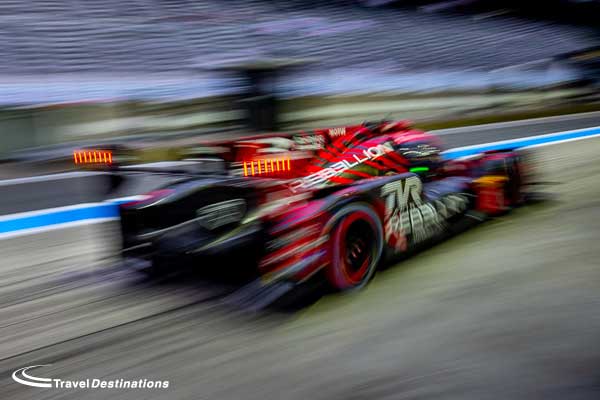
“It’s a cool team,” Matt Griffin said when asked to reflect on his time spent driving with Clearwater Racing. “It’s a little bit like Reservoir Cats! Clearwater is a team where the people involved are very proud of what they can do. We have fun, we have crazy parties after the races. Weng loves his wine, and stuff like that. And that’s the thing, I’ve been with them since 2011. The only thing I would say though is that the Matt Griffin you might see at ELMS races, or in Blancpain, is different to the Matt Griffin with Clearwater. There’s a different vibe there, and it’s a team that relies more on sponsors and partners.”
“We’re not ruling anything out,” revealed Corvette Racing’s Doug Fehan when asked about his opinion on the 2020 regulations. “An overall win at Le Mans is a unique achievement, and when you look at the intent of the past efforts to create something unique, it became too expensive This move, to the credit of the sanctioning bodies, is to find something that’s more affordable and technologically representative of where you want to go, with proper brand identification, so it would stand a better chance of attracting manufacturers. But I’m sure that there will be manufacturers who continue to run both (GTE and LMP1). Porsche is a prime example, with a big customer race programme, and they’ve shown in the past that they can do both.”
“The atmosphere in the team is amazing. Everyone is really friendly,” Fernando Alonso said when asked about racing with Toyota. “We have a Whatsapp group and we are always chatting. We were taking pictures of each other today. The atmosphere is so friendly and so nice – this is one of the best things.”
“I have had a great career to this point, not only in F1 but also in the junior categories,” DragonSpeed’s Pastor Maldonado stressed when asked about his public persona. “I have won in every category I have raced in and I hope to carry that record forward into this new challenge. For me it is about the racing, about the driving I don’t care what people say, it’s part of the game. I just go out there, do my best and hope to win.”
“What a character, and what a legacy, a real innovator and a visionary,” Richard Dean said, when asked to pay tribute to the late, great, Dr Don Panoz. “He was a man who truly invested in the sport, in his series, his circuits and his cars. The American Le Mans Series showed the way, it is still my favourite race series. There are so many that owe their careers in this sport to the opportunities that Don’s investments and projects provided. At Le Mans (in 2006, with a Team LNT Esparante), it seemed coming into the race that everything was against us, engine issues at the test, we were allocated Garage 13, but his enthusiasm never wavered, he tried for 10 years to get the win and was just ecstatic when we did it. And he was given the Spirit of Le Mans award by the ACO that same weekend! I grabbed a Panoz flag from someone on my way to the podium, I see that picture every day in my gym. Without Don that wouldn’t have been possible, a simply huge part of my career.”
Written by Stephen Kilbey
Photography by Dailysportscar
